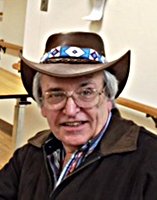
Alan B. Crawford
By Alan B. Crawford
This week, our town announced the construction of a natural playground for our children at Chadwick Lake Park! Immediately my mind wandered back after seeing some of the photos. Growing up in the Town, we didn’t really have public playgrounds back in my day, though there were some at our public schools.
These school playgrounds included swings, see saws, slides, and of course, the dreaded merry go ‘round. We learned many things from this equipment. I guess the first lesson was the effect of gravity.
You would push, and push, and push, swinging higher and higher, hoping to reach the sky. At the top of the arc, there was that moment of weightlessness and perhaps a flutter in your stomach until you began dropping again and begin another arc. The more adventurous of us would sometimes try to emulate Peter Pan and fly out of the swing as we reached the apex of the arc. Those adventurers instantly understood the concept of gravity.
Slides provided a much more demure demonstration of gravity, for those faint of heart, allowing one to experience the phenomenon again and again until one completely grasped the concept. But, slides also provided other learning lessons!
Metal slides instructed us in the physics of direct sunlight. There was nothing more exciting in grade school than hearing the recess bell sound. You ran to the playground, climbed up the slide, ready to shove off for the ride of your life, when you discovered that shiny metal surfaces did not only reflect the sun, sometimes blinding you if you got at just the correct angle, but also absorbed the rays, converting sunlight to heat, elevating the metal surface temperature to a reading on the Fahrenheit scale which would fry an egg! And, on a clear day in the winter, a bit of snow reduced the friction, allowing faster speeds. But, if you had anything wet with respect to clothing, and sat motionless for a brief time, you understood that at 32 F, things froze. No matter what anyone says, I never saw someone stick their tongue on a metal surface and get stuck.
And, let’s not forget centrifugal force! Everyone would pile on the merry go ‘round, with the stronger kids running and pushing around the perimeter before hopping on. Stepping off, you realize that your body will continue to attempt to move in the direction you have been spinning. The faster the merry go ‘round had been spinning, the more pronounced the trajectory.
Also, after spinning about, your eyes convey to your brain the blur of images passing by. Obviously there is a time lag in this communication process and a sensory overload will be experienced. Leaving the spinning platform, the equilibrium of the fluids in your eardrums takes a bit of time to restore your sense of balance. Children staggering about after leaving this devilish contraption do not need to be tested for mind altering substances or alcohol. Just allow them to sit and be quite until things settle down.
Playgrounds surprisingly didn’t really come into focus until the early 1900’s, though “sand” gardens, which are considered the original playgrounds, were seen starting around 1885 in Germany. Boston quickly caught on and in 1886, established its first public playground, one of the first to be known in our country.
Public playgrounds were built as there were really no open spaces in congested urban areas. Children needed a safe place to play, exercise, and congregate other than the streets. Having a place where they could socialize, stretch their developing muscles, and getting out of their cramped living conditions was a Godsend.
In 1906, the Playground Association of America was formed to promote the construction, benefits, design, and so. I believe this was a great boon to the inner city youth. The sharing of ideas and concepts moved the playground initiative rapidly forward in the past 100 years.
Fortunately, when I was growing up in our Town, we had an abundance of open space which was a blessing. If you were respectful, and asked permission from other land owners, you could play on their property if allowed. We found streams, built dams, placed logs across them to be used as bridges (for those of us less coordinated, gravity came into play again and we sometimes got wet), and climbed trees. From the top of a tree, it’s amazing how far you can see, especially when you’re small.
The idea of a natural playground is something I find extremely rewarding! Rather than discard all those attributes individuals of my generation embraced then discarded for plastic and steel contraptions, we’re returning to our roots. The use of natural components such as logs, trees, and stone, often supplied from the land the natural playground is being built on promotes the beauty of the area as well as teaches our children about their environment. There is nothing better than using nature as a teacher and allow a child’s imagination to create a wonder world.
I encourage all of you to watch as this project unfolds and take time to visit and see it for yourself. Our Town continues to show pride in its heritage and natural beauty, always taking it to higher levels. In these trying times, an open area which are children can play is paramount to keeping them safe, engaged, and growing both emotionally and physically.